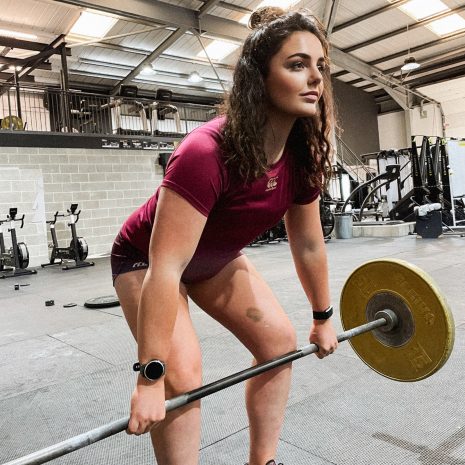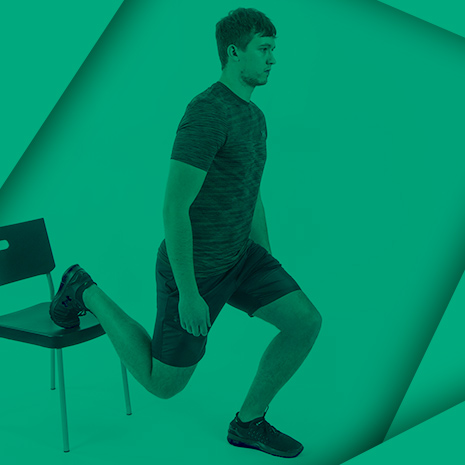We have teamed up with esteemed Chartered Physiotherapist, Neil Aitken to give you high-quality information on the most common Rugby injuries and how to best recover from them. If there’s a particular injury you’d like us to cover with Neil’s help, get in touch with us on social media (Facebook | Twitter).
What Is My Collarbone And How Is It Injured?
The collarbone, or clavicle, connects your sternum (chest bone) to your scapula (shoulder blade) at the tip of your shoulder. It is unusual to sustain any injury to the collarbone without trauma. This may be caused by a fall onto an outstretched hand, impact directly onto the shoulder or to the collarbone itself.
The most common injuries are a fracture to the collarbone itself or a disruption to the joint at either end of the bone.
The sternoclavicular joint (SC joint) is where your collarbone meets your chest bone and the acromioclavicular joint (AC joint) is where it meets the shoulder blade.
Why Does My Collarbone Hurt?
The location of your pain is the easiest way to determine the potential injury. Pain does not typically refer with any of the collarbone injuries. A fracture would typically be nearer the middle of the collarbone and you may be able to feel the break as the bone is very close to the skin. The SC joint would be tender to palpate (feel) where your collarbone meets your chest bone and likewise for the AC joint where the collarbone meets the shoulder blade (at the tip of the shoulder).
Broken Collarbone Diagnosis
Most collarbone fractures are treated conservatively and so will simply be immobilised in a sling while the bone heals. Severe breaks may require surgery, with pinning to re-align the bone and help it to heal. At the time of injury a full medical assessment would be required, including an x-ray.
The same can be said for AC joint injuries. The collarbone and shoulder blade are held together by ligaments and one or all may be disrupted by injury.
- Grade I is a slight displacement of the joint and a badly stretched or partially torn acromioclavicular ligament. A separation of <4 mm may be seen at the AC joint on X-Ray.
- Grade II is a partial dislocation of the AC joint with a complete tear of the acromioclavicular ligament and a partial disruption of coracoclavicular ligament. The AC gap is >5 mm. Grades I and II very rarely require surgery and heal by themselves, through guided physiotherapy.
- Grade III is a complete disruption of the acromioclavicular and coracoclavicular ligaments. It is still rare for a grade III sprain to require surgery as most will heal themselves, although you would be left with a bump on the top of the tip of your shoulder due to the displacement of the collarbone where it meets the shoulder blade. After it has healed it will be stable and you should return to full shoulder function.
- Grade IV to VI injuries are complications on a standard Grade III disruption due to the displacement of the collarbone and usually require surgery.
Sternoclavicular joint injuries are much less common as the force involved in a collarbone injury is more likely to cause a fracture or AC joint disruption before the SC joint is involved.
Broken Collarbone Recovery Time
Most collarbone injuries will heal themselves and not require surgery. A fracture will typically take 6 weeks to heal but you should not expect to regain full shoulder range of motion and strength for at least a further 6 weeks, this is similar for AC joint disruptions. The ligaments will take roughly 6 weeks to heal and a further 6 weeks may be required to regain full shoulder function. Contact sports, such as rugby, may be undertaken at roughly 3 months post injury. A Grade III AC joint disruption may require longer to recover fully and it may be 16-20 weeks before a return to contatct sports, such as rugby, can occur.
When returning to full contact training/gameplay, you should consider using a shoulder support for additional joint stability.
The general rehabilitation for these injuries involves immobilisation in a sling for 2-4 weeks initially, followed by a graded exercise program as pain allows. Early exercises focus on regaining shoulder mobility – the degree to which you push this will be determined by pain. As range and quality of movement improve, strengthening can then be included. This will target the rotator cuff and scapular muscles (shoulder blade) initially and then progress to more global shoulder strengthening, involving pushing and pulling exercises.

The function of the thoracic spine is also crucial to the shoulder. This is the mid-section of your spine between the neck and lower back. 2-4 weeks of shoulder immobilisation and reduced activity will mean that your thoracic spine may have tightened up. A physio would therefore give you exercises for this area to complement your shoulder rehabilitation. Good mobility of the thoracic spine is required for optimum shoulder function.
About the author
Neil Aitken is a Chartered Physiotherapist with a private clinic in Edinburgh. He has previous experience as a senior physiotherapist in the NHS and provided physio for one of the top amateur rugby teams in Scotland. He is highly evidence-based having completed a Post Grad in Musculoskeletal Physiotherapy gaining membership to the MACP, one of the most highly respected qualifications within physiotherapy.
Website: http://www.neilaitkenphysio.co.uk/
Facebook: https://www.facebook.com/neilaitkenphysio/
Twitter: @aitkenphysio

Please note, this article is intended to serve as a guide for general information only. Injuries should be assessed by a qualified specialist such as a physiotherapist or doctor. When you sustain an injury, there are always complicating factors that may need to be assessed and addressed by a professional.




Comments